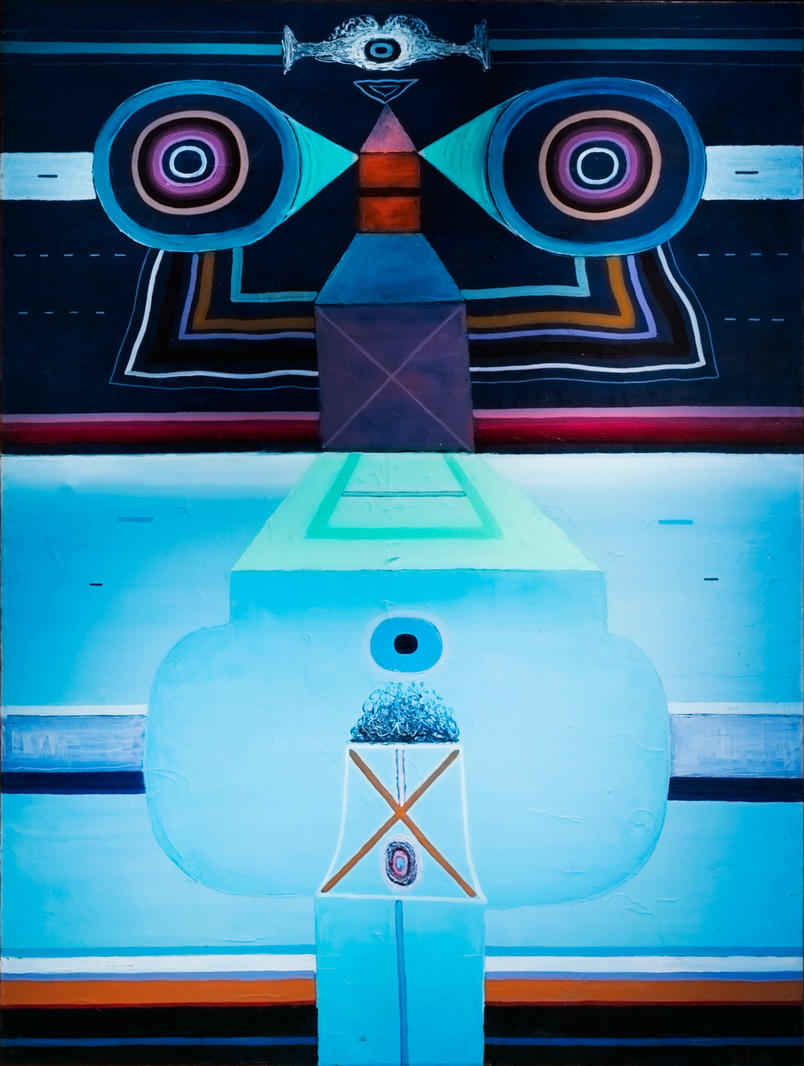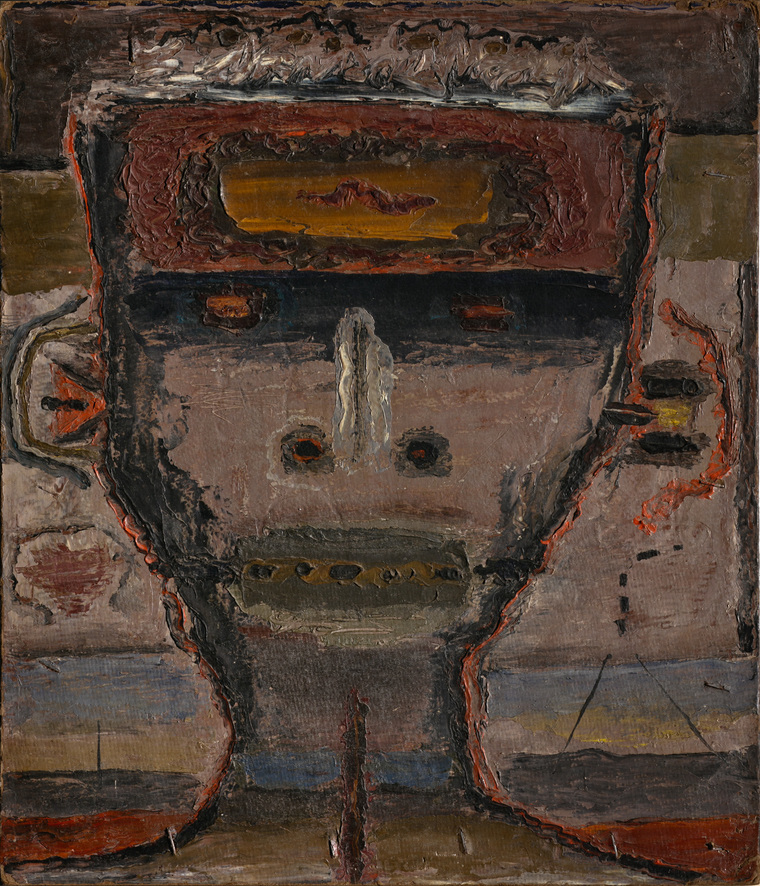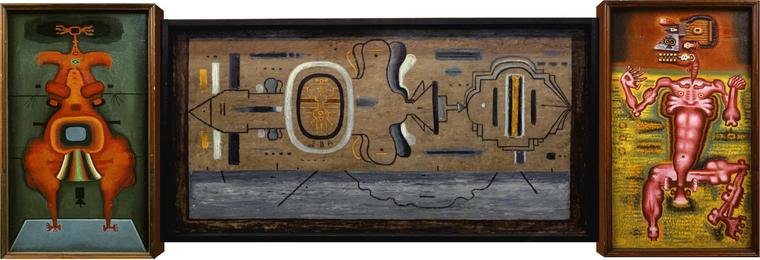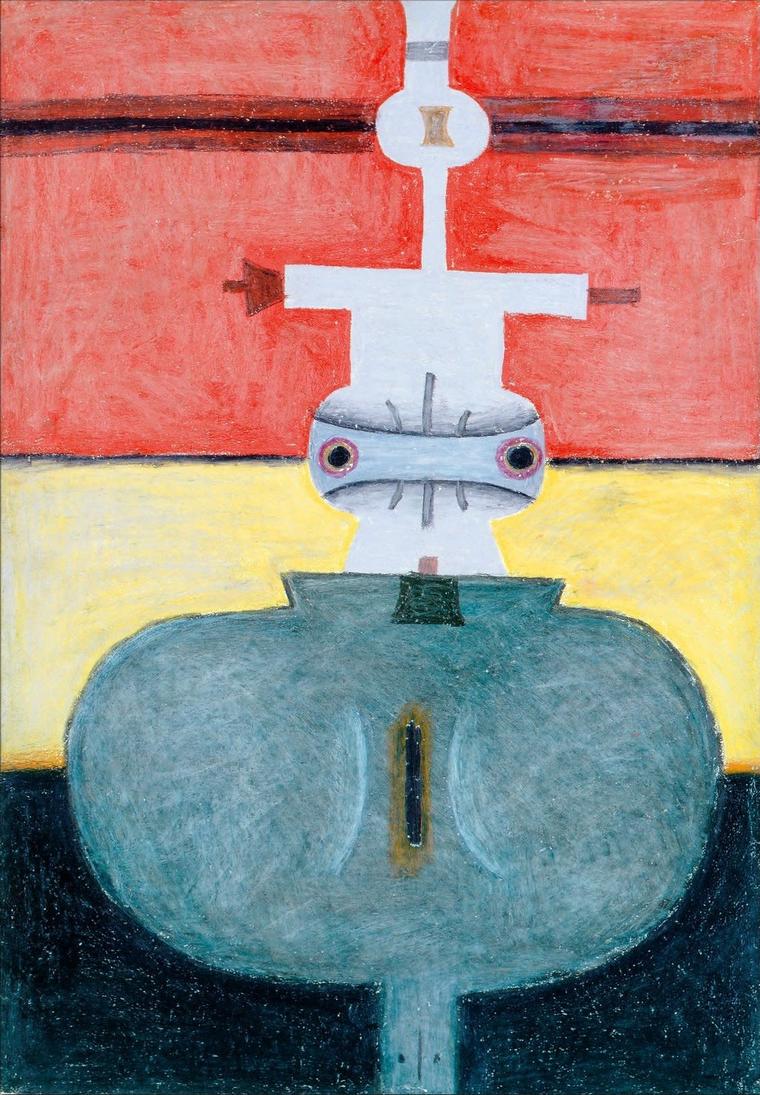
The presented work is included in the cycle "Woman by the Sea", started by Vladimir Yankilevsky with drawings back in 1961 and the first painting work in 1967. This cycle belongs to the central theme of the artist – the relationship between masculine and feminine in their deep essence and their role in the universe. They symbolise two polar energies, two beginnings of a single world. Yankilevsky has found images that can accommodate the human and metaphysical – these are the first people and the progenitors of all mankind, Adam and Eve. In his work, the artist consistently developed plastic methods, expressing the difference between these two beginnings.
A man in author mythology is always dynamic and directed outward, he strives to master and comprehend a new space, so the artist depicts him in the profile (beginning with the cycle "The Man's Portrait", 1961). In his appearance, technical details appear, often the whole image reflects mechanical processes and impulses. A woman in Yankilevsky's system is more connected with nature as a material side of the universe – it's no accident that the sea becomes an integral part of the image. It is aimed at preserving and conserving energy, and in this is humanistic. The difference in attitude towards the world is visualised in several early works of 1958, "Two on the Beach", in which the artist depicts a couple against the background of the sea bay. The woman is immersed in herself, her posture is static and closed, while the man in an inexplicable surge of energy makes a stand on his hands. In the future, Yankilevsky will continue the motif of the pacified female figure on the coast, and in the early 1960s he will develop the cycle "Woman by the Sea".
Directly on the creation of the cycle Yankilevsky inspired once seen the image of a woman emerging from the sea, it for many years became important in his artistic system. The natural matter merges with the figure forming a single whole, and the woman becomes part of the landscape to the same degree in which it is a part of herself.
Formally, "Woman by the Sea" complements the "Torso" cycle (1963), in which the image of Eve is also being worked out in parallel. They are united by the similarity of plastic techniques. The first works, from which the cycle "Woman by the Sea" began, retaining features of figurativeness, but over time these images become more speculative and conditional. Yankilevsky spreads the torsos into separate anatomical components, he focuses on the internal and external parts of the body, reducing them to a conditional scheme. The artist makes organs, skeleton, nervous system, energy aura visible in one space. This principle resembles a sacred geometry in which by means of symbolic images complex relations between material things and metaphysical phenomena are designated.
In the cycle "Woman by the Sea" there are two basic compositional schemes, which Yankilevsky developed in parallel: horizontal and vertical. In the first figure is aligned along the horizon line, it is semi-abstract, asymmetric. Such was the earliest drawing of the cycle (1961). In the vertical scheme "Women by the Sea", to which the presented work relates, Yankilevsky striving to create a harmonious and self-sufficient image, builds the composition on the principle of axial symmetry. Emphasising femininity and simultaneously balancing the composition, the artist depicts hypertrophied wide hips, large breasts and a narrow waist, emphasising sexual characteristics.
In search of a universal expression of femininity, Yankilevsky unintentionally came to the same results as the sculptors of the Paleolithic age, thousands of years ago, in the understanding of which this image was associated with fertility. In the author's iconography, female forms are almost always streamlined and smooth, but at the same time Yankilevsky combines various elements: stringing ellipses, rectangles, triangles on one axis, the artist creates a figure that looks like a tower. This combination of biomorphic and technogenic, archaic and modern makes up the specifics of his work.
In the presented work Yankilevsky gives the color a separate expressiveness. Muted but saturated shades are used here. Shaded by a black background, the blue glows from within. The artist develops a complex color scheme, built on the rhythms of registers of contrasting color: the wide lines define the coordinate system. The illuminated band from below divides the world into two parts: the dark sky and the piercing blue sea. But before us is not just a conditional landscape, but the symbol of the female energy field is part of that "space of experiences" between a man and a woman, which Yankilevsky developed in parallel in separate pictorial cycles from the beginning of the 60s. The body rhymes in color with two parts of the picture, thereby, as it were, being disposed, becoming one with the metaphysical space. V





